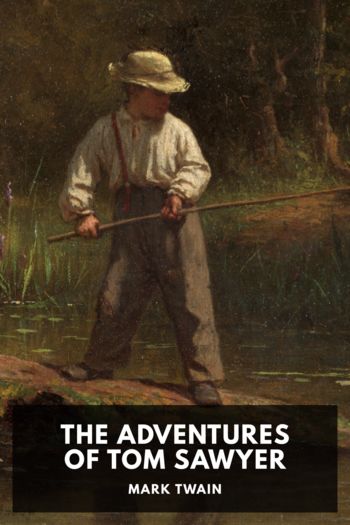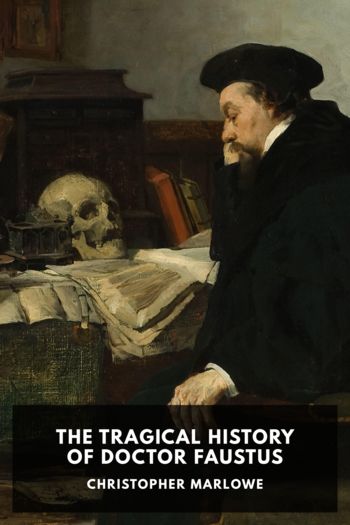The Autobiography of Mark Twain Mark Twain (best beach reads .TXT) 📖

- Author: Mark Twain
Book online «The Autobiography of Mark Twain Mark Twain (best beach reads .TXT) 📖». Author Mark Twain
I will throw in a note or two here touching the time when Susy was seventeen. She had written a play modeled upon Greek lines, and she and Clara and Margaret Warner, and other young comrades, had played it to a charmed houseful of friends in our house in Hartford. Charles Dudley Warner and his brother, George, were present. They were near neighbors and warm friends of ours. They were full of praises of the workmanship of the play, and George Warner came over the next morning and had a long talk with Susy. The result of it was this verdict:
“She is the most interesting person I have ever known, of either sex.”
Remark of a lady—Mrs. Cheney, I think, author of the biography of her father, Rev. Dr. Bushnell:
“I made this note after one of my talks with Susy: ‘She knows all there is of life and its meanings. She could not know it better if she had lived it out to its limit. Her intuitions and ponderings and analyzings seem to have taught her all that my sixty years have taught me.’ ”
Remark of another lady; she is speaking of Susy’s last days:
“In those last days she walked as if on air, and her walk answered to the buoyancy of her spirits and the passion of intellectual energy and activity that possessed her.”
I return now to the point where I made this diversion. From her earliest days, as I have already indicated, Susy was given to examining things and thinking them out by herself. She was not trained to this; it was the make of her mind. In matters involving questions of fair or unfair dealing, she reviewed the details patiently and surely arrived at a right and logical conclusion. In Munich, when she was six years old, she was harassed by a recurrent dream, in which a ferocious bear figured. She came out of the dream each time sorely frightened, and crying. She set herself the task of analyzing this dream. The reasons of it? The purpose of it? The origin of it? No—the moral aspect of it. Her verdict, arrived at after candid and searching investigation, exposed it to the charge of being one-sided and unfair in its construction: for (as she worded it) she was “never the one that ate, but always the one that was eaten.”
Susy backed her good judgment in matters of morals with conduct to match—even upon occasions when it caused her sacrifice to do it. When she was six and her sister Clara four, the pair were troublesomely quarrelsome. Punishments were tried as a means of breaking up this custom—these failed. Then rewards were tried. A day without a quarrel brought candy. The children were their own witnesses—each for or against her own self. Once Susy took the candy, hesitated, then returned it with a suggestion that she was not fairly entitled to it. Clara kept hers, so, here was a conflict of evidence—one witness for a quarrel, and one against it. But the better witness of the two was on the affirmative side, and the quarrel stood proved, and no candy due to either side. There seemed to be no defense for Clara—yet there was, and Susy furnished it; and Clara went free. Susy said, “I don’t know whether she felt wrong in her heart, but I didn’t feel right in my heart.”
It was a fair and honorable view of the case, and a specially acute analysis of it for a child of six to make. There was no way to convict Clara now, except to put her on the stand again and review her evidence. There was a doubt as to the fairness of this procedure, since her former evidence had been accepted, and not challenged at the time. The doubt was examined, and canvassed—then she was given the benefit of it and acquitted; which was just as well, for in the meantime she had eaten the candy, anyway.
Whenever I think of Susy I think of Marjorie Fleming. There was but one Marjorie Fleming. There can never be another. No doubt I think of Marjorie when I think of Susy mainly because Dr. John Brown, that noble and beautiful soul—rescuer of marvelous Marjorie from oblivion—was Susy’s great friend in her babyhood—her worshiper and willing slave.
In 1873, when Susy was fourteen months old, we arrived in Edinburgh from London, fleeing thither for rest and refuge, after experiencing what had been to us an entirely new kind of life—six weeks of daily lunches, teas, and dinners away from home. We carried no letters of introduction; we hid ourselves away in Veitch’s family hotel in George Street and prepared to have a comfortable season all to ourselves. But by good fortune this did not happen. Straightway Mrs. Clemens needed a physician, and I stepped around to 23 Rutland Street to see if the author of Rab and His Friends was still a practicing physician. He was. He came, and for six weeks thereafter we were together every day, either in his house or in our hotel.
New York, Monday, February 5, 1906Dr. John Brown continued—Incidents connected with Susy Clemens’s childhood—Bad spelling, etc.
His was a sweet and winning face—as beautiful a face as I have ever known. Reposeful, gentle, benignant—the face of a saint at peace with all the world and placidly beaming upon it the sunshine of love that filled his heart. Doctor John was beloved by everybody in Scotland; and I think that on its downward sweep southward it found no frontier, I think so because when, a few years later, infirmities compelled Doctor John to give up his practice, and Mr. Douglas, the publisher, and other friend set themselves the task of raising a fund of a few thousand dollars, whose income was to be devoted to the support of himself and his maiden sister (who was in age), the fund was





Comments (0)